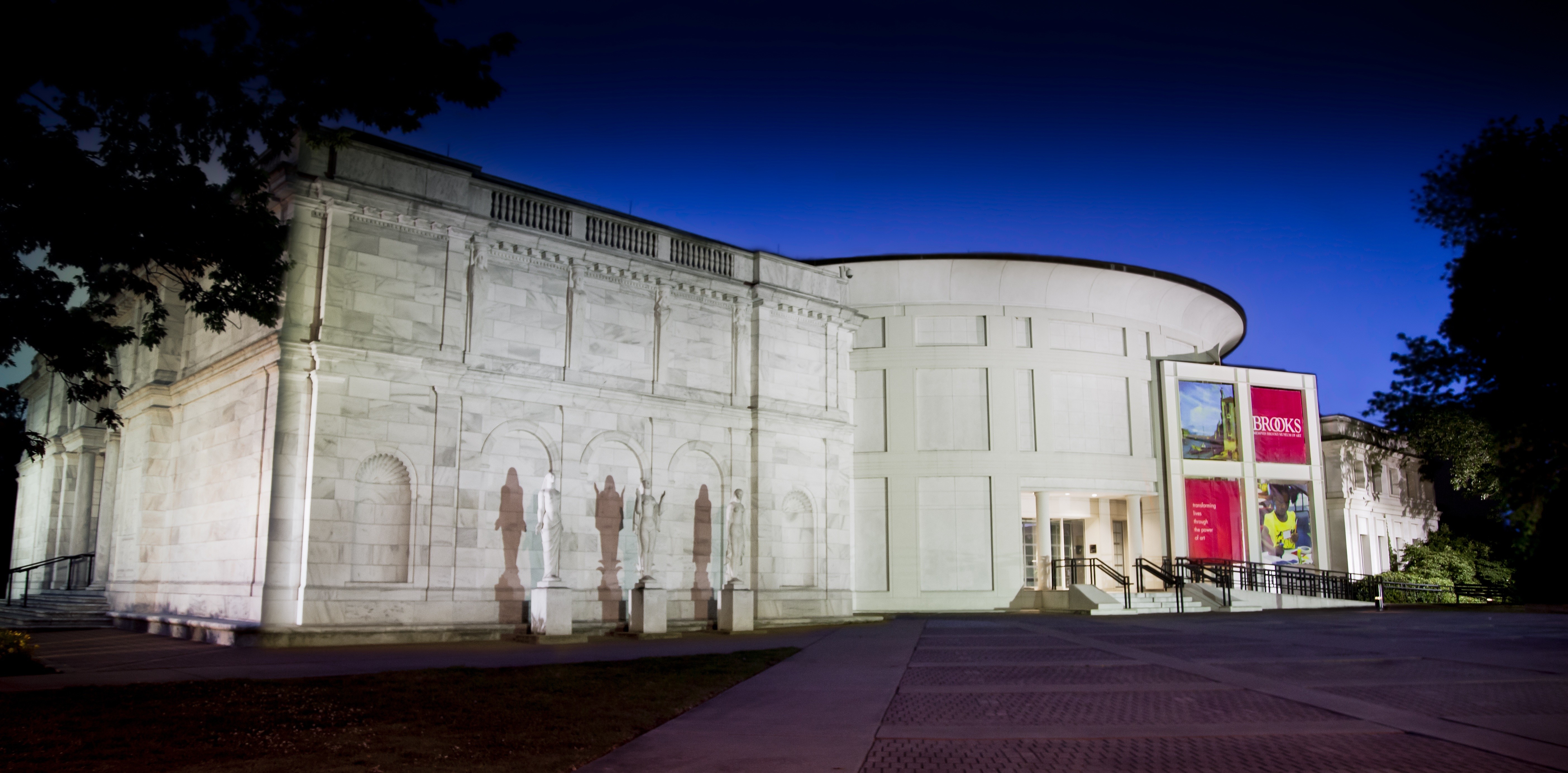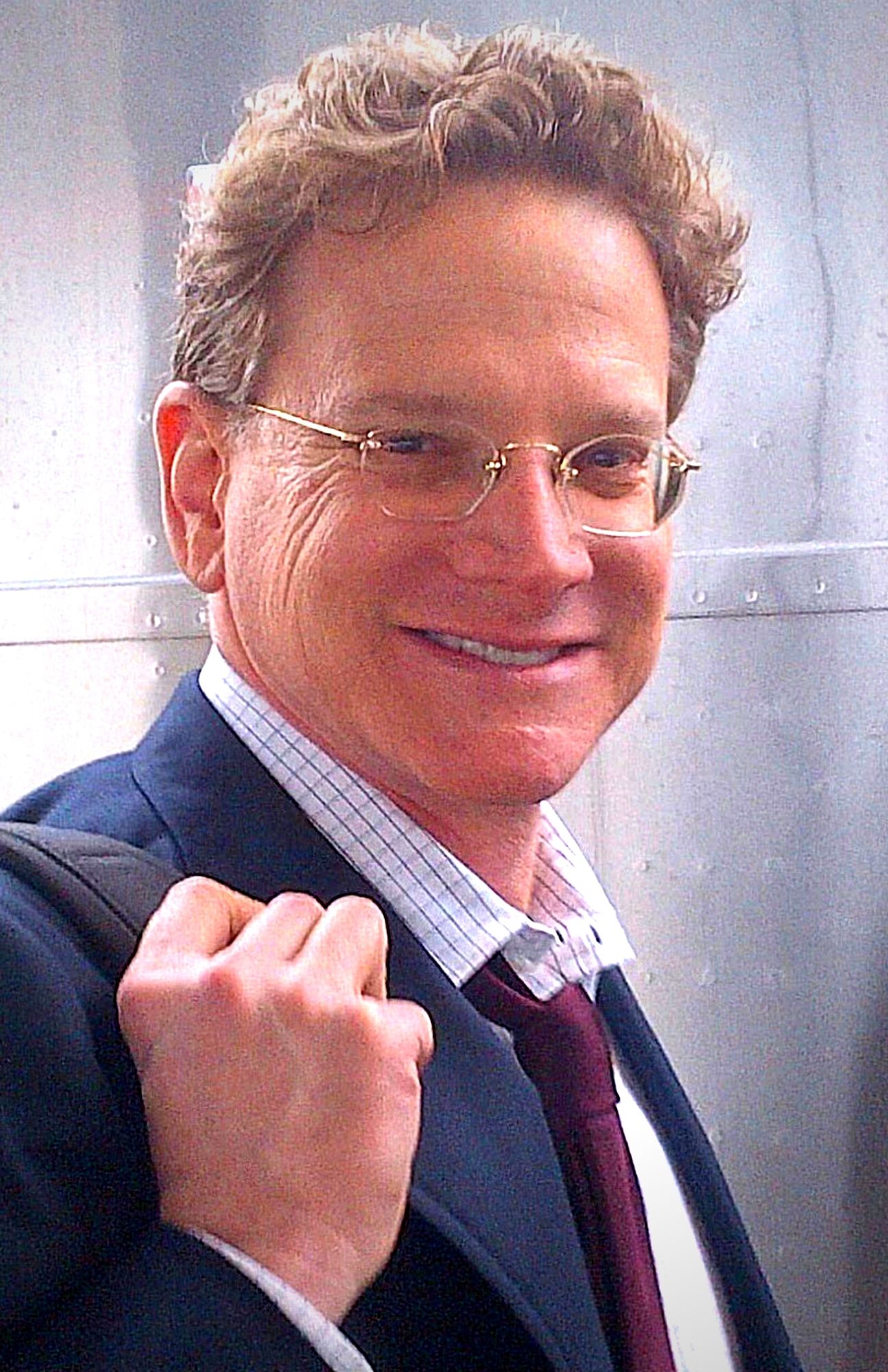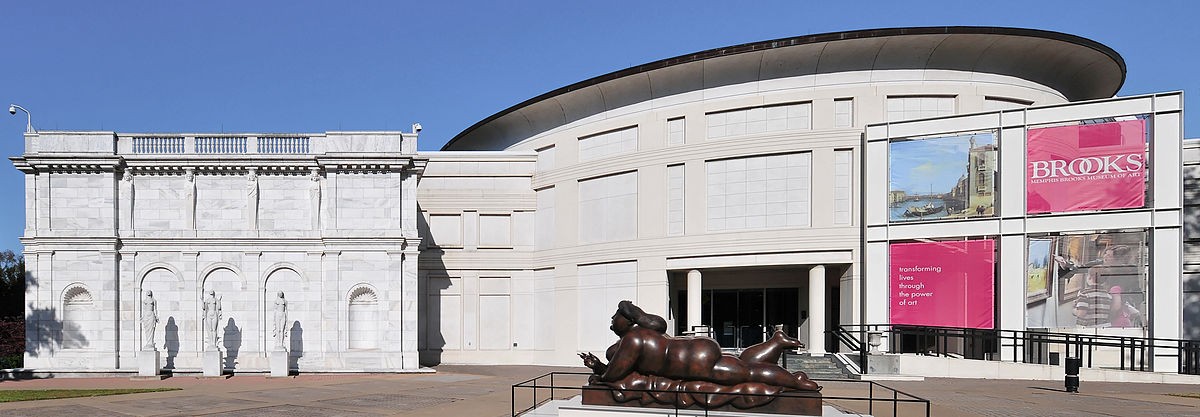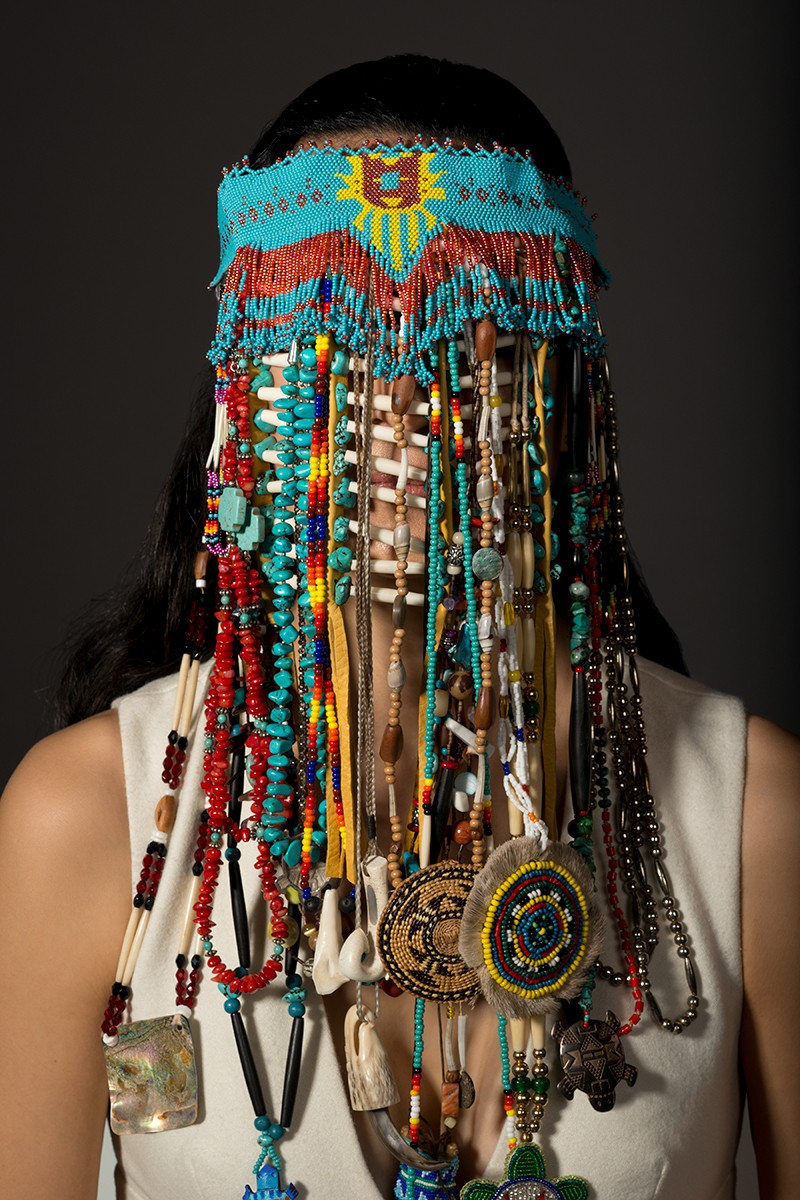 Kevin Barre Photography
Kevin Barre Photography
Brooks Museum of Art
Brooks Museum of Art officials announced last week that they would consider relocating the museum from its 101-year home in Overton Park as one option to preserve its collection and plot its future.
Emily Ballew Neff, the museum’s executive director, said renovations to meet current standards have been projected at $84 million. The Brooks board, she said, has a duty “to make some very hard decisions” and are correct to “explore all options before we move forward.” — Toby Sells
Memphis Flyer: You have a list of options for the Brooks and you just recently added relocation to that list, right?
Emily Ballew Neff: Right. That’s all we’re doing.
Basically in the 1990s, the Brooks board decided that the 1973 (portion of) the building was not operationally sound. And that building is still standing.
MF: Is anything in it?
EBN: Yes, we have art in it. We have temporary exhibitions in it. It’s had structural problems pretty much ever since it was built. It was a pre-cast concrete building and it (does not meet seismic standards) and we are on the New Madrid fault.
It’s something that we have to address and want to address. We have to secure the collection in the way that it needs to be secured and preserved.
We maintain everything in it that we’re supposed to do, the climate control, the humidity levels and the whole bit. But it is not easy to do that, to make it into the kind of building that it needs to be in order to maintain the work in safely.
The board has been working on this issue since the 1990s. In the 2000s, the museum — and remember this is long before I was here; I’ve been here two-and-a-half years — the board was teeing up for a capital campaign to address the challenges of that building. Then, in 2008, the Great Recession happened. So, those plans were mothballed.
What my predecessor did in the interim was to go ahead and commission — with the support of one of our major funders, Wil and Sally Hergenrader — a space facilities program. So, we have a report from Cooper Robertson, a firm in New York, and they did an extensive report for the Brooks board.
That report was presented to the board in 2014. Then, my predecessor accepted a job at the Cincinnati Art Museum and left. So, the plans, again, were put on hold.
Basically, what the Cooper Robertson plan did was to outline several options for the board. The first option was to retrofit the 1973 building and bring it up to museum best practices standards.
We do maintain it. I think it’s important for people to understand that the art they see in that space, we do everything we can and we are able, at great expense and at great trouble, to maintain those climate control and humidity levels.
One of the options was to retrofit that building. That had the same conceptual budget as tearing down the 1973 building and adding 23 percent (more space).
The third option was to add about 70 percent-75 percent additional space, tear down the 1973 building, which would allow you to do the expansion. That would have taken over, though, some precious space in our parking lot. That had a conceptual budget of $84 million, and that is in 2013-2014 dollars.
With my predecessor’s departure, everything was put on hold again. I came in April 2015 and we were getting ready celebrate our centennial. We had only one exhibition on the books. What I decided to do with our staff was to do everything that we could to look as great as we could for our centennial year.
 Brandon Dill
Brandon Dill
Emily Ballew Neff
That’s when we introduced two new exhibition programs. One is Brooks Outside, which takes the museum beyond its walls. That’s thing like Tape Art, the bunnies, and Red Ball. We’ll be doing another project in the spring.
We also started the Rotunda project, where we brought in changing exhibitions into the rotunda. We added some additional programming for our centennial year.
We also carved out of our existing spaces, every square inch that we could for the display of art. I think a lot of people don’t know that even though that 1989 addition added one small gallery, basically it was more about adding the rotunda, the auditorium, the restaurant, and some of those public spaces, which are terribly important.
So, it was the right to add those spaces. But it didn’t really add any new room for the display of art.
So, in essence, we’ve not added new space for art since 1973. And our collection has grown significantly. We now have over 10,000 objects. We also ran out of art storage a long time ago.
We have a fantastic curatorial staff. We have two curators who basically do programming at this museum from our annual operating budget. We do programming that’s usually at the levels of institutions twice our size.
So, we really punch above our weight. We have a great staff, great community, and great members. So, that’s all terrific. But the board has known since the 1990s that we must address these problems.
So, our long-range planning committee was formed by the board in November of 2015. This is not to be confused with strategic planning. We have a strategic plan. This is long-range planning, which deals with the physical plant.
They were charged with going through the Cooper Robertson plan with a fine-toothed comb. They determined, over a series of probably eight meetings or so, that in doing a cost-benefit analysis they thought, ok, if it’s $84 million and it’s plus or minus, because it’s a conceptual budget. At the end of the day, where do we end up?
That’s when they decided we needed to put all options on the table and consider a relocation. Once you get up to $84 million, you’re getting pretty close to what it would cost to start over anew with a more sustainable building rather than trying to fix some of these longstanding problems.
MF: When did the long-range planning committee come up with that idea?
EBN: Long-range planning makes recommendations to the executive committee and that committee makes recommendations to the full board. So, the full board determined this summer that we wanted to put all options on the table.
But we don’t meet during the summer, as a board. But one of the reasons we decided to announce was simply that there a lot of people making speculations and the word was kind of getting out. So, we thought it was better to be transparent about it and let our members know that this options was added to the list of pre-existing options.
[pullquote-1]MF: When the announcement came out, it seemed like y’all were really careful with it. There was an announcement and then you went silent.
EBN: Well, there was nothing to announce. I mean, we’ve announced what we’ve announced. We’ve shared this one bit of information and we have some existing options and we’re exploring those but we have nothing to announce.
Our board is acting responsibly. They have a duty to make some very hard decisions. They are right that we should explore all options before we move forward.
If we’re talking about a conceptual budget of $84 million, you need to then do a cost-benefit analysis. If it’s that amount and we do this expansion and it takes you into the already precise parking lot that we have, that will trigger some decisions that we have to make.
I think it’s just a matter of being responsible. We need to explore and exhaustedly explore all options. It’s our duty to do that.
MF: Would it be tough to leave Overton Park?
EBN: We love Overton Park. It’s absolutely gorgeous.
We love being here. We’ve had a fantastic 100-year-long history here. It’s such a distinguished, historic park. But I think we have to put all options on the table and that is all we are doing.
MF: Is these a timeline for a decision?
EBN: There is no timeline. I get that question a lot. We are exploring some interesting possibilities. Our board is doing that work. We’ll know something when we know something.
MF: I’ve heard that the Brooks is able to show about 10 percent of what you have. Is that accurate?
EBN: It’s probably pretty accurate and it’s pretty accurate for most art museums. I think what most people forget is that art museums are also repositories.
We have one of the most important collections in the nation and possibly even the world of original photographs by (William) Eggelston as well as original photographs by Ernest C. Withers. We were the second art museum in the country to give Bill Eggleston a solo exhibition back in the 1970s.
Work on paper, such as photographs, can be on view for three months to six months at a time before they have to go back in storage. They are affected by light levels. So, remember we’re about conserving that collection as well as displaying it and interpreting it.
For every month that a photograph or a work on paper is on display, it has to rest for one year. So, even if we wanted to, we couldn’t have all of our Egglestons on display all the time, or all of our Withers photographs on view all of the time. You have to maintain certain light levels and you have to rest them.
There is no doubt that if you don’t have new space since 1973, that’s a problem. We were able to retrofit, during our centennial, an orientation theater that was mostly functioning as a coat check. We tore that out and created a new space for the display of art.
We retrofitted our board room and for a permanent collection of artwork by Caroll Cloar. We’re one of the world’s best and largest repositories of Caroll Cloar’s in the world. So, we wanted a space for that.
We moved some offices and spare office space so we could show more of our Eggleston and Withers collections. Right now, we have Eggleston up and beginning in February, we’ll have a year-long display of Ernest Withers. And we also have other great photographs.
So, you have to be careful about these 10 percent (figures). Or, is it 12 percent? Or, is it 8 percent? That’s simply because there are artworks that cannot be on view all the time.
Then the works that can be on view, we try to cycle works in and out and keep the displays pretty vibrant and lively.
But there is no doubt that we have been bursting at the seams for a very long time.
MF: In your statement, you said visibility and accessibility were important to the Brooks to be able to continue attract art works there. Can you talk about that a little bit?
EBN: Art museums are many things but they are also a history or a particular city as seen through the lens of the art objects that have been collected and then donated to the art museum.
Yes, we have a terrific collection of art at the Brooks. One of the ways we can talk about it is the 5,000 years of art forms from many continents that we represent. You would have to go to St. Louis, or to Birmingham, or to New Orleans to encounter an art museum that includes artwork that comes from around thew world.
[pullquote-2]But you can also look at the art museum in terms of the history of the city. We are Memphis and you can trace the history of the city through the artworks that have come here.
So, part of our jobs as a staff and our board is to attract the most important art collections in our community. The way you do that is to convince those art collectors that we are the best place to steward their legacy.
That means they are going to ask a lot of questions. How visible are you? How accessible are you? Are your buildings set up to take a great collection such as XYZ collection?
You get a lot of questions. So, you have to be able to prove to your donors that we are the right place. Art collectors have lots of options. They have options in the city. They may be courted by art museums outside of Memphis.
It’s my job, it’s the job of the board, and it’s the job of the staff to build that kind of donor confidence. Quite fankly, and the board has known this since the 1990s, we have been at some disadvantage.
[pullquote-4]But we certainly did the best that we could during the centennial. We called them Botox renovations because we knew that we needed more work than we were able to do with not a lot of money. But we were able to make ourselves look as good as we could and to make things look as exciting as we possibly could.
Now that the centennial is over, we’re back to addressing these long-standing problems we have with the building.
We have a really fine collection here. It’s an important collection.
We have a Kress Foundation, Kress collection here. Memphis was the first Kress store. It’s an amazing story of philanthropy, of entrepreneurial philanthropy.
When Samuel Kress died, instead of giving his 30,000 objects in his collection to just one institution. He spread it out and gave it to institutions throughout the country that had Kress stores and Memphis was the first Kress store in the country.
So, we’re a major, important collection of Kress paintings. In fact, the Kress Foundation board met here. They’re in New York and they came to Memphis last February for their board meeting.
[pullquote-3]As I said, we one of the major repositories for original Egglestons and for original Withers, certainly Caroll Cloar. We have an important collection of early American modern art, as well as contemporary art.
So, we also have African art, which we are currently re-installing. We’re currently re-installing the Day Collection of Antiquities. We have some fantastic objects in pre-Columbian art and we’re getting ready to re-install that collection as well.
So, we’re doing the best we can with what we have and with the resources we have.
But, really, the board is doing what is supposed to do, which is to work with the staff to address these long-term building needs.
We’re the city museum and we want to be responsive. We have lots of people who are very positive and understand what our challenges are. We have others who are very concerned and we certainly appreciate and respect that. We knew that. That’s, in part, why we wanted to go ahead and let people know that we’re just putting all options on the table.



 Courtesy Memphis Brooks Museum of Art and Crystal Bridges Museum of American Art
Courtesy Memphis Brooks Museum of Art and Crystal Bridges Museum of American Art  Google Maps
Google Maps 
 Kevin Barre Photography
Kevin Barre Photography  Kevin Barre Photography
Kevin Barre Photography  Brandon Dill
Brandon Dill  Facebook – Brooks Museum of Art
Facebook – Brooks Museum of Art